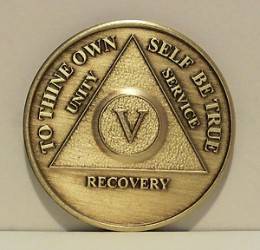 For years I have been asked when recovery from alcohol or drug dependence reaches a point of durability, or put another way, "When does recovery today predict recovery for life?" After investigating all of the scientific evidence I could locate on this question, I have regularly responded that this point of durability seems to be reached at 4-5 years of continuous recovery, meaning that less than 15% of those who reach that point will re-experience active addiction within their lifetime (with opioid addiction potentially being closer to the 25% mark). This means that if you reach the 5-year recovery benchmark, your risk of again meeting diagnostic criteria for a substance use disorder is similar to the risk for such a diagnosis within the general population. (Ironically, this 5-year benchmark is strikingly similar to the durability point for cancer remission.) Reaching this benchmark is not assurance of invulnerability, but it does mark a point at which a much greater force is needed to destabilize recovery. I have used this finding to argue that all persons treated for addiction should be afforded five years of post-treatment recovery checkups (e.g., monitoring and support) on par with that afforded most cancer patients in the U.S.
For years I have been asked when recovery from alcohol or drug dependence reaches a point of durability, or put another way, "When does recovery today predict recovery for life?" After investigating all of the scientific evidence I could locate on this question, I have regularly responded that this point of durability seems to be reached at 4-5 years of continuous recovery, meaning that less than 15% of those who reach that point will re-experience active addiction within their lifetime (with opioid addiction potentially being closer to the 25% mark). This means that if you reach the 5-year recovery benchmark, your risk of again meeting diagnostic criteria for a substance use disorder is similar to the risk for such a diagnosis within the general population. (Ironically, this 5-year benchmark is strikingly similar to the durability point for cancer remission.) Reaching this benchmark is not assurance of invulnerability, but it does mark a point at which a much greater force is needed to destabilize recovery. I have used this finding to argue that all persons treated for addiction should be afforded five years of post-treatment recovery checkups (e.g., monitoring and support) on par with that afforded most cancer patients in the U.S.
Erectile dysfunction drugs do not cause addiction and if you buy Cialis generic online without a real diagnosis, then addiction will be no more than to your favorite TV show.
For those of you wishing to investigate this conclusion more thoroughly, the following is the list of the studies upon which I based my conclusion about the 5-year recovery set point.
De Soto, C.B., O'Donnel, W.E., & De Soto, J.L. (1989). Long-term recovery in alcoholics. Alcoholism: Clinical and Experimental Research, 13, 693-697.
Dawson, D. A. (1996). Correlates of past-year status among treated and untreated persons with former alcohol dependence: United States, 1992. Alcoholism: Clinical and Experimental Research, 20(4), 771-779.
Dennis, M.L., Foss, M.A., & Scott, C.K. (2007). An eight-year perspective on the relationship between the duration of abstinence and other aspects of recovery. Evaluation Review, 31(6), 585-612.
Dennis, M.L., Scott, C.K., Funk, R., & Foss, M.A. (2005). The duration and correlates of addiction and treatment careers. Journal of Substance Abuse Treatment, 28, S51-S62.
Hser, Y.I., Hoffman, V., Grella, C., & Anglin, D. (2001). A 33-year follow-up of narcotics addicts. Archives of General Psychiatry, 58, 503-508.
Jin, H., Rourke, S.B., Patterson, T.L., Taylor, M.J., & Grant, I. (1998). Predictors of relapse in long-term abstinent alcoholics. Journal of Studies on Alcohol, 59, 640-646.
Langendam, M.W., Van Brussell, G., Coutinho, R.A., Van Ameijden, E.J. (2000). Methadone maintenance and cessation of injecting drug use: Results from the Amsterdam Cohort Study, Addiction, 94, 591-600.
Nathan, P., & Skinstad, A. (1987). Outcomes of treatment for alcohol problems: Current methods, problems and results. Journal of Consulting and Clinical Psychology. 55, 332-340.
Schutte, K., Byrne, F., Brennan, P., & Moos, R. (2001). Successful remission of late-life drinking problems: A 10-year follow-up. Journal of Studies on Alcohol 62, 322-34.
Shah, N.G., Galai, N., Celentano, D.D., Vlahov, & Strathdee, S.A. (2000). Longitudinal predictors of injection cessation and subsequent relapse among a cohort of injection drug users in Baltimore, MD, 1988-2000. Drug and Alcohol Dependence, 83, 147-156.
Vaillant, G. E. (1996). A long-term follow-up of male alcohol abuse. Archives of General Psychiatry, 53(3), 243-249.
For a discussion of my concern about the lack of research on people who re-experience addiction after reaching this 5-year recovery benchmark, click here.